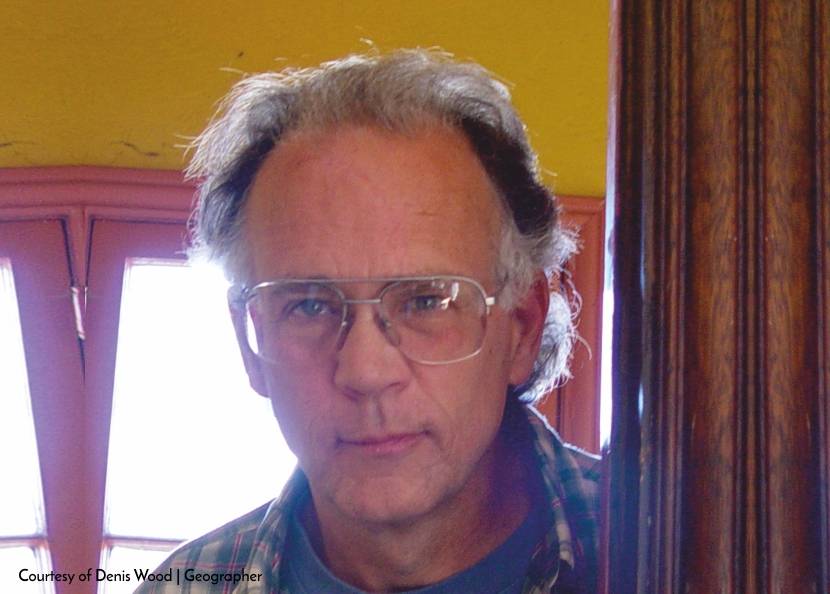Everything Sings

Everything Sings: In 1974, I began teaching environmental perception to landscape architecture students at North Carolina State University in Raleigh. I used mapping as a way of selectively focusing their attention on those aspects of the landscape that, in the instrumentality of their training as future professionals, they were apt to overlook: the way the land smelled, the way it felt in their legs when they walked it, the sound of the wind in the oaks after all the other leaves had fallen, the way twilight made all the difference. At least this was all useless knowledge — nothing a developer or a bank could monetize — and the maps were fun to make. And because landscape architecture students are design students, there was both an attention to polish and an imaginative drive to find the less “mappable” things that, from the beginning, set their work apart from that of cartography students who were more concerned with “getting it right.” Even so, I couldn’t get them to leave the streets off their maps.
As they mapped the nearby neighborhoods — Cameron Village, Cameron Park, Deveraux, Brooklyn Heights and Boylan Heights — the streets seemed to be the irreducible subject, the what-it-was that made neighborhoods neighborhoods. If you’re laying out subdivisions, as many of these students would end up doing professionally, streets really are all you have to play with, which is exactly why I was all the more eager to get rid of them. The streets seemed to inhibit the other qualities to which I was trying to draw their attention. The streets always emerged in the foreground no matter how far into the background you intended them to recede.
That’s when I knew we could write poems in maps, and I began thinking seriously about a poetics of cartography.
Then in 1982 we were working on Boylan Heights, on a whole atlas of Boylan Heights, specifically a map of street lights, and we began paring away the inessential, the map crap (the neat line, the scale, the north arrow), the neighborhood boundaries, the topography, finally the streets: first the scaled streets, then a schematic grid of the streets, and finally, even a hint of a grid of the streets. Daylight went too — that default daylight that most maps take for granted — so that we were fooling around with circles of white on a black background. It became clear that the map wasn’t about the lamp posts, but about the lamp light, and light was something we weren’t sure how to deal with. Certainly, the uniform white circles we’d been drawing caught nothing of the way the light was fringed at the edges, and one night, armed with a camera, we scaled a fence and climbed a radio tower on the edge of Boylan Heights hoping to catch the night lights on film. What a disappointment! The view from above was nothing like walking in and out of the pools of dappled light on the streets below. But I had a pochoir brush at home, and when Carter Crawford — who’d put himself in charge of atlas graphics — used it to draw the circles, it was magical. That was the way it felt to be walking the streets at night!
Nothing but blotches of white. The usual “efficient” map would have located everything on the street onto a single sheet — that is, different marks for lamp posts, fire hydrants, street signs, trees. Our inefficient map concentrated on a single subject, and, rather than lamp posts, it brought the pools of light into view. No legend, no north arrow, no neat line, none of the usual apparatus. At last, a modernist feel!
That’s when I knew we could write poems in maps, and I began thinking seriously about a poetics of cartography.
One way of thinking about Boylan Heights is as a place in Raleigh, North Carolina, bounded by a prison and an insane asylum and some railroad tracks and a little creek. But there are other ways of thinking about it too. You could think about it as a neighborhood, that is, as some sort of community, or as a marriage of community and place, or as those people in that place, their relationships, and their ways in the world; and thus, less a place than a process, a life process, a metabolic one. That would take an atlas to unravel: what a neighborhood is, what a neighborhood does, how a neighborhood works.
If this weren’t such an ordinary, everyday thing, you’d think it was magic, but it’s just the transformation of the impossible, inaccessible space of the city into the possible, accessible space in which you live.
When you look really hard at a neighborhood, it’s impossible to miss how uncertain its edges are. This is because neighborhoods aren’t about being distinctive, or rather, they’re not especially about being distinctive. The most important thing about neighborhoods is how similar to the rest of the city they are, how undifferentiated, how ordinary. Neighborhoods are part of the city. They’re most of it. What neighborhoods do is make the city real. They transform the common, ordinary stuff of the city — water and sewer, electricity, streets — into the real stuff of our lives. This is the part the neighborhood plays in the life of the city, the part of a Proteus capable of turning a perfectly ordinary lamp post or crab apple tree or stretch of sidewalk into that power pole whose cables hum and sing at night as you fall asleep, that crab apple beneath which you played as a child, that stretch of sidewalk in which your kids wrote their names while the concrete was still wet. It transforms the stars that shine on everyone alike into the stars that you wish on.
If this weren’t such an ordinary, everyday thing, you’d think it was magic, but it’s just the transformation of the impossible, inaccessible space of the city into the possible, accessible space in which you live; the transformation of the city as a whole — the abstracted “too many miles, too many people”— into you, into me, into us. (From the other side, of course, we are the “too many people.”)
Let me hasten to say that, by no means, has all of this made it into the book Everything Sings or the slideshow presented here. These are maps for a narrative atlas, not the atlas itself. I have included four new maps drawn for Places, along with a selection of maps from the book. The threads began to twist themselves into an epic poem whose structure may someday shoulder the burden of its argument. But the project is not finished, and it may never be. What you see here is a piece of a dream: a collection of maps as a poem, or fragments of a much longer poem out of which a passable semblance of the whole has been reconstructed.
Editor’s Note:
This feature is originally appeared on placesjournal.org and is adapted from Everything Sings: Maps for a Narrative Atlas, published in 2010 by Siglio Press, which includes an essay by Denis Wood and more than 50 annotated maps.





